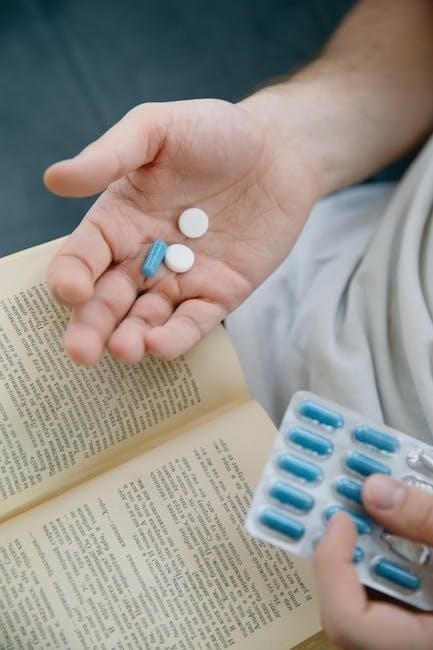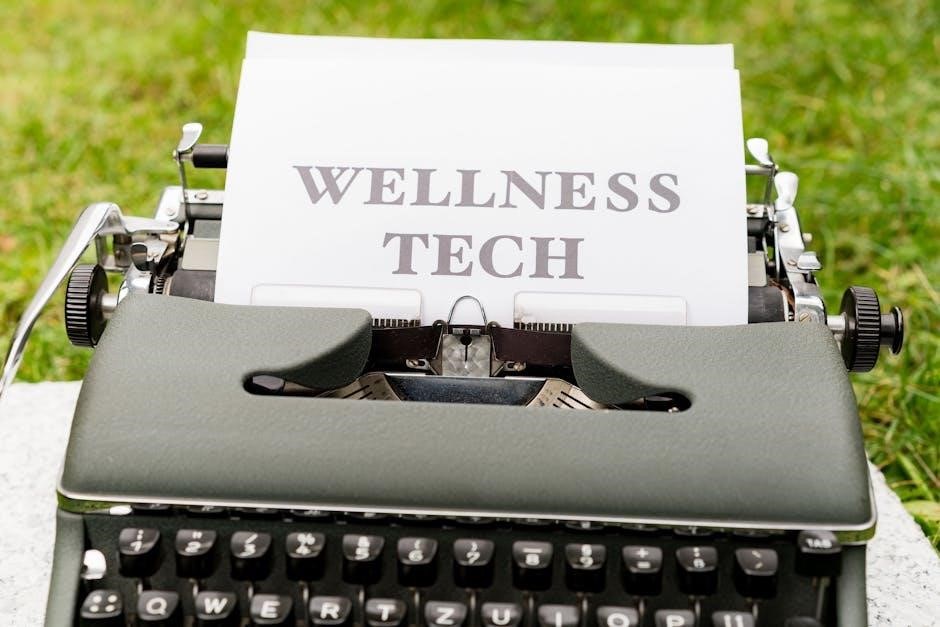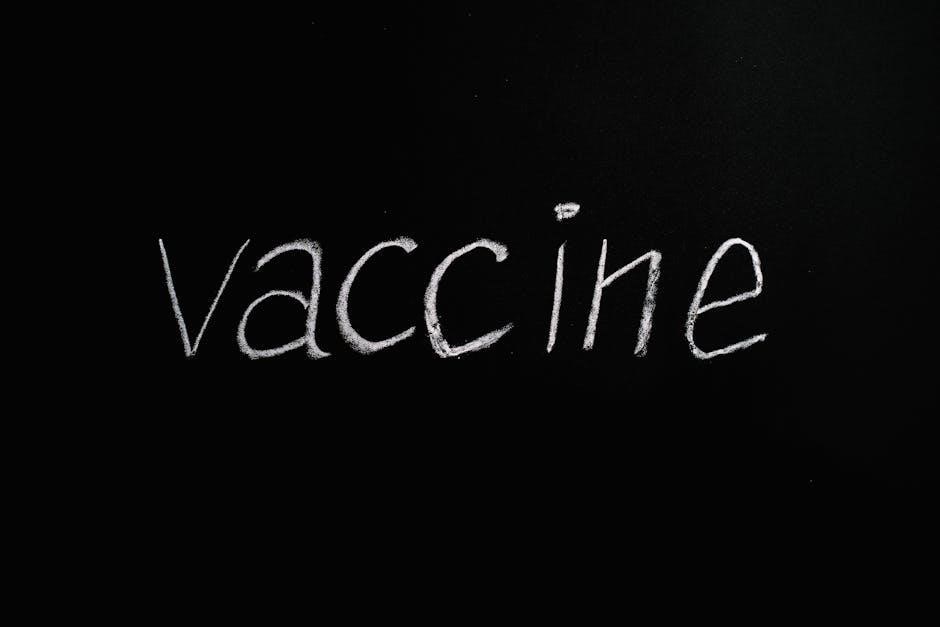Manual medicine is a medical discipline focusing on diagnosing, treating, and preventing reversible functional disorders of the musculoskeletal system. It combines techniques like joint mobilizations, muscle energy, and myofascial release to restore mobility and function.

Techniques of Manual Medicine
Manual medicine encompasses various techniques such as joint mobilizations, muscle energy techniques, myofascial release, soft tissue manipulation, and spinal adjustments. These methods aim to restore movement and alleviate musculoskeletal dysfunction effectively.
2.1. Joint Mobilizations
Joint mobilizations are a cornerstone of manual medicine, focusing on restoring joint mobility and reducing stiffness. Techniques involve slow, deliberate movements to activate joints, improving range of motion and functionality. This method is non-invasive and tailored to patient needs, addressing pain and dysfunction effectively. By targeting specific articulations, it enhances biomechanical efficiency and promotes healing in injured or compromised joints. Through rhythmic and controlled motions, joint mobilizations aim to break down adhesions and restore normal joint mechanics, providing relief and improving overall musculoskeletal health. This approach is widely used in osteopathic and chiropractic practices to address various musculoskeletal conditions, making it a versatile and effective therapeutic tool.
2.2. Muscle Energy Techniques
Muscle energy techniques (MET) are a dynamic approach in manual medicine, emphasizing patient participation to address joint dysfunction; These techniques involve controlled muscle contractions, such as isometric, concentric isotonic, eccentric isotonic, and isolytic movements, tailored to specific clinical needs. By engaging the patient’s muscles, MET enhances joint mobility, reduces muscle spasms, and improves proprioception. This method is particularly effective for treating restricted joints and chronic musculoskeletal conditions. MET also aims to restore normal muscle tone and strength, promoting functional recovery. Its gentle and precise application makes it suitable for a wide range of patients, from acute injuries to chronic pain management. The integration of patient effort with therapeutic guidance allows for a personalized and effective treatment strategy, making MET a valuable tool in manual medicine practices.

2.3. Myofascial Release
Myofascial release is a gentle, hands-on technique used to address restrictions within the fascial system, the connective tissue surrounding muscles, bones, and organs. By applying sustained, gentle pressure, practitioners release tension and adhesions in the fascia, restoring normal movement and function. This method is particularly effective for chronic pain, limited range of motion, and soft tissue dysfunction. Myofascial release promotes relaxation, improves circulation, and reduces muscle spasms. It is often used in combination with other manual medicine techniques to enhance overall treatment outcomes. The technique is widely applied in osteopathic and chiropractic practices, as well as physical therapy, to address conditions such as lower back pain, headaches, and fibromyalgia. Its non-invasive nature makes it a popular choice for patients seeking holistic and non-pharmacological approaches to pain management and musculoskeletal health.
Benefits of Manual Medicine
Manual medicine improves mobility, reduces pain, and enhances overall well-being by addressing musculoskeletal dysfunction. It promotes healing, relaxes muscles, and improves joint function, offering a holistic approach to health.

3.1. Biomechanical and Physical Benefits
Manual medicine enhances biomechanical function by improving joint mobility and reducing stiffness. Techniques like joint mobilizations restore normal movement patterns, while soft tissue methods alleviate muscle tension. This fosters an environment conducive to tissue repair. Additionally, manual therapy optimizes posture and alignment, thereby distributing forces more effectively across the musculoskeletal system. Such physical improvements can prevent chronic issues like degenerative joint disease. The biomechanical benefits also extend to enhanced neuromuscular coordination, allowing for more efficient movement and reduced strain on injured areas. Over time, consistent application of manual medicine can lead to long-term improvements in physical function and overall musculoskeletal health.
3.2. Psychological Benefits
Manual medicine offers significant psychological benefits by reducing pain and stress, which can improve an individual’s mental well-being. Techniques such as myofascial release and muscle energy methods promote relaxation, lowering anxiety levels. The reduction of chronic pain enhances mood and reduces depression. Additionally, manual therapy fosters a sense of control over one’s body, boosting self-esteem. The hands-on approach in treatments can create a therapeutic connection, providing emotional support. Furthermore, the release of tension in soft tissues can decrease stress hormones like cortisol, promoting a calmer state of mind. Overall, manual medicine addresses both physical and psychological aspects, leading to improved mental health and a better quality of life.

Historical Context of Manual Medicine
Manual medicine has deep roots in ancient practices, with early civilizations employing various forms of manual therapies to treat musculoskeletal disorders. The modern foundation of manual medicine began in the 19th century with Andrew Taylor Still, who founded osteopathy, emphasizing the interconnection of mind, body, and spirit. The 20th century saw the rise of chiropractic medicine, introduced by Daniel David Palmer, focusing on spinal manipulation. Over time, manual medicine evolved, incorporating diverse techniques like myofascial release and muscle energy methods. Historical reviews highlight the integration of these practices, blending traditional methods with scientific advancements. Today, manual medicine is a comprehensive discipline, widely recognized for its holistic approach to treating functional disorders. Its rich history underscores its adaptability and effectiveness in addressing both physical and psychological well-being. This evolution has solidified its place as a key component in modern healthcare, offering a blend of traditional wisdom and contemporary innovation.
Applications in Osteopathic Medicine
Osteopathic manipulative medicine (OMM) is a core application of manual medicine, using techniques like joint mobilizations and myofascial release to reduce pain, enhance mobility, and treat musculoskeletal disorders.
5.1. Osteopathic Manipulative Medicine
Osteopathic manipulative medicine (OMM) is a key component of osteopathic practice, employing manual techniques to diagnose and treat somatic dysfunction. It focuses on improving joint mobility, reducing muscle tension, and enhancing lymphatic and circulatory function. OMM incorporates methods like joint mobilizations, myofascial release, and muscle energy techniques to restore balance to the body. By addressing restrictions in the musculoskeletal system, OMM aims to alleviate pain, improve range of motion, and promote overall well-being. It is particularly effective for conditions such as lower back pain, headaches, and sports injuries. OMM is performed by osteopathic physicians who undergo specialized training in manual medicine, ensuring a holistic approach to patient care. This technique not only addresses physical symptoms but also supports the body’s innate healing mechanisms, making it a valuable tool in integrative medicine.
Applications in Chiropractic Medicine

Chiropractic medicine applies manual techniques like spinal manipulations and adjustments to restore joint mobility, relieve pain, and improve nervous system function. It focuses on the spine’s role in overall health and well-being.
6.1. Chiropractic Adjustments and Techniques
Chiropractic adjustments involve manual techniques to restore joint mobility and reduce pain. Common methods include spinal manipulation, where controlled force is applied to specific joints to improve alignment and function. These techniques often target the spine but can also address extremities. Chiropractors use tools like drop tables or activators for precise adjustments. Soft tissue techniques, such as massage or myofascial release, may complement these methods. The goal is to enhance nervous system function and overall well-being. This approach emphasizes non-invasive, drug-free care, making it a popular choice for managing musculoskeletal disorders. By addressing joint dysfunction, chiropractic adjustments aim to promote natural healing and improve quality of life for patients.
Case Study: Manual Medicine in Practice
A 45-year-old patient presented with chronic lower back pain and sciatica, limiting daily activities. Manual medicine techniques were employed to address joint dysfunction and soft tissue restrictions. Joint mobilizations improved spinal mobility, while myofascial release reduced tension in the piriformis muscle. The patient reported significant pain reduction and improved range of motion after six sessions. This case highlights the effectiveness of manual medicine in managing musculoskeletal disorders through non-invasive methods.

Future Directions in Manual Medicine
Manual medicine is evolving with advancements in research and technology. Future directions include integrating manual therapy with other modalities like acupuncture and visual color-impulse therapy to enhance treatment outcomes. Research is expected to focus on optimizing techniques, such as joint mobilizations and muscle energy methods, to address chronic conditions like lumbar osteochondrosis. The use of wearable devices and AI to monitor patient progress and personalize treatments is anticipated. Additionally, there is a growing interest in combining manual medicine with psychological interventions to improve overall well-being. As evidence-based practices expand, manual medicine is likely to become more accessible and tailored to individual needs, offering innovative solutions for musculoskeletal and related disorders.

Manual medicine stands as a versatile and effective approach for addressing musculoskeletal disorders, offering a blend of diagnostic, therapeutic, and preventive strategies. Its techniques, such as joint mobilizations and muscle energy methods, provide significant benefits, both biomechanical and psychological. By enhancing mobility, reducing pain, and promoting tissue repair, manual medicine improves overall well-being. Its integration with other therapies, like acupuncture and visual color-impulse therapy, highlights its adaptability. The field continues to evolve, with research focusing on optimizing techniques and expanding applications. As a cornerstone of osteopathic and chiropractic practices, manual medicine remains a vital tool in modern healthcare, promising innovative solutions for future challenges. Its holistic approach ensures it remains a cornerstone in treating and preventing musculoskeletal and related disorders, offering hope for enhanced patient outcomes.